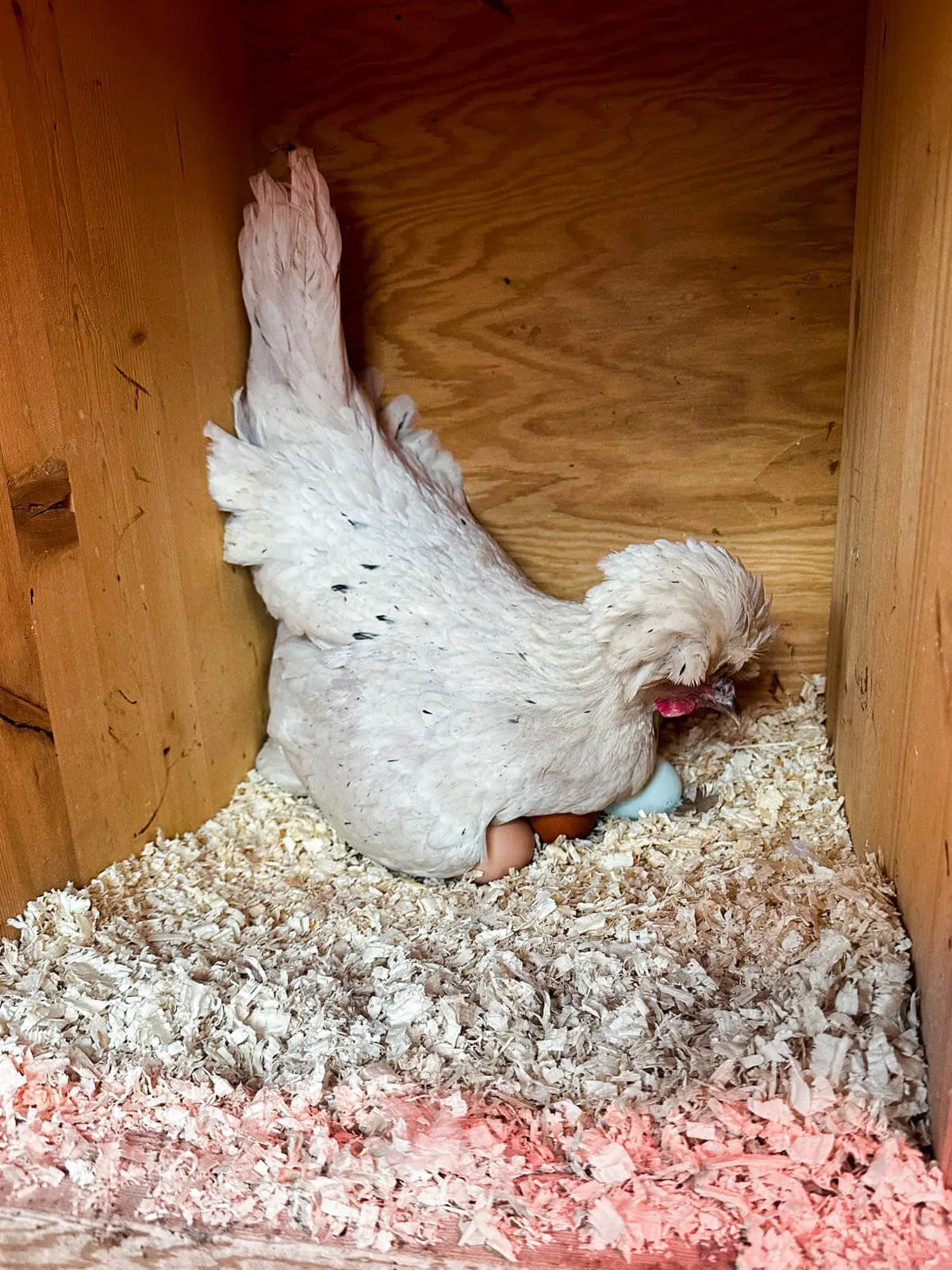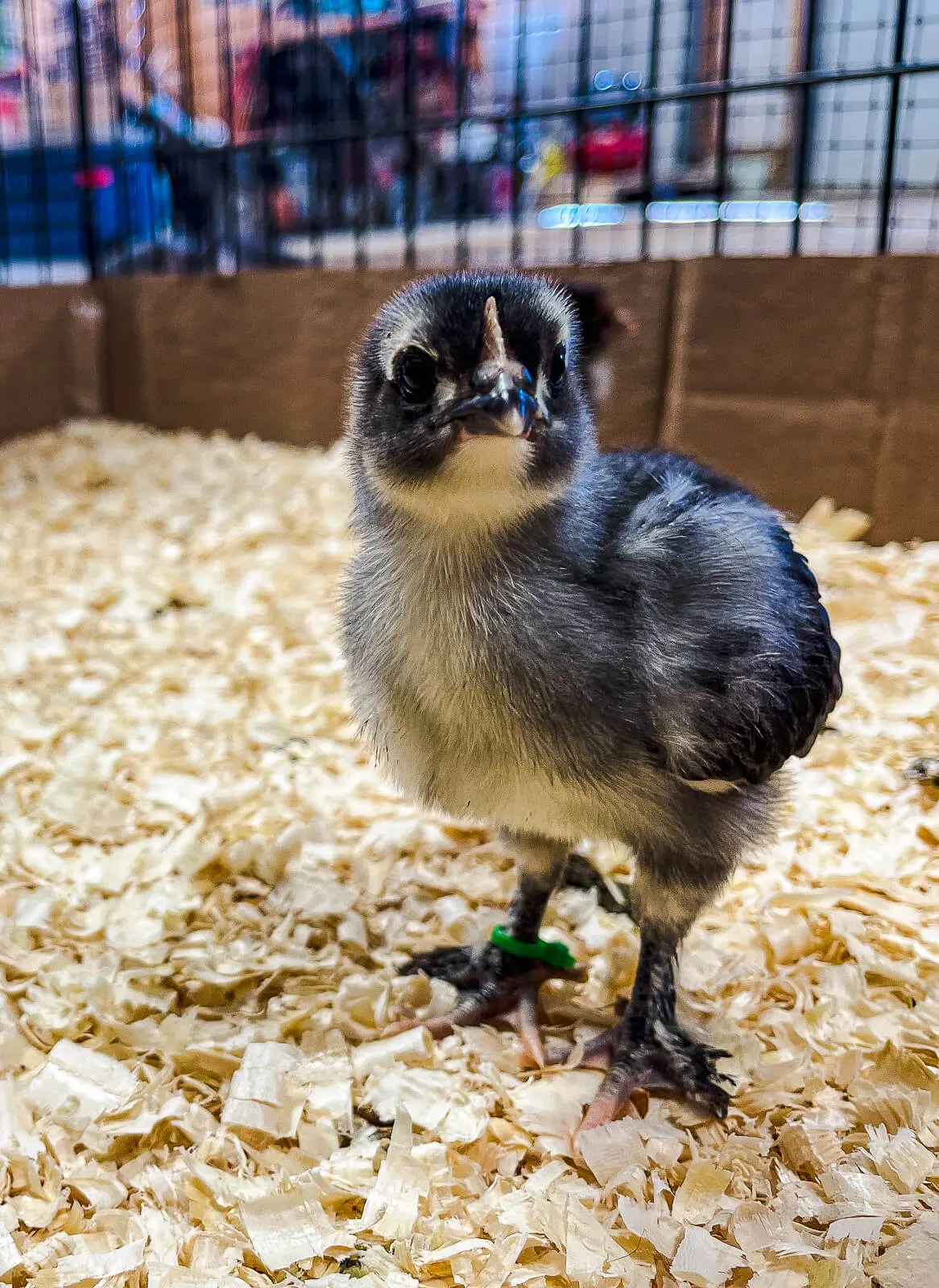Spring is in the air!
You know what that means? Chick season!
As the days grow longer and the weather warms, it's the perfect time for those of us with a passion for poultry to start thinking about expanding their flock, refresh their layers, and add new charming personalities to the coop.
Or just do extra curricular chicken math. If you know, you know!
Collecting chicken eggs for hatching isn't quite as routine as collecting fresh eggs, and understanding the nuances of egg collection can make a huge difference in your hatching success.
I'll share everything I know about collecting hatching eggs to help you maximize your hatch rate. These tips apply whether you're using a broody hen to hatch or an incubator!

As an Amazon Associate I earn from qualifying purchases.
Jump to:
What's The Difference Between Hatching Eggs And Eating Eggs?
If you've got a rooster in your flock of backyard chickens, the answer is nothing!
Yes, hatching eggs need to be fertilized by a rooster to be viable for hatching, but if you're like us and have a crowing alarm clock (or 2), you should already be getting fertile eggs from your flock.
The only difference between an egg you're going to eat and and egg you're going to hatch is how you collect it, select it, and store it before it's being incubated, whether by a hen or in an incubator.
That, and price. If you buy or sell hatching eggs, you'll know they are much more costly than eating eggs.
I don't recommend hatching grocery store eggs for a number of reasons, mostly that commercial egg producers do not keep roosters on staff, so the eggs won't be fertilized. Even if they were, the eggs are not stored in the proper conditions that maximize hatching abilities.

Timing
As the old saying goes, timing is everything, and that goes for collecting hatching eggs too!
Usually the best time to collect hatching eggs is between February and March. Unless you're like us, living in cold zone 3 where its cooler further into the spring. For us the ideal time to collect eggs is March and April.
Your flock comes out of winter strong and healthy after a break from laying. This means your hens bodies are prepped and ready to go for the laying season ahead, they've got plenty of reserve nutrients and calcium in their systems. It stands to reason that chicks hatched from early season eggs will also be stronger and healthier.
Another bonus to hatching chicks early in the season is that there's a good chance they'll start laying in the fall, and continue to lay into the winter. Chicks hatched too early may begin to lay in the summer months, molt in the fall and then take a break for the winter which defeats the purpose of trying to refresh your laying stock!

Collecting
It is vitally important to NOT wash the eggs before hatching. Hens lay eggs coated in what's called a bloom, and this layer helps to protect the egg from external bacteria penetration and reduces evaporation loss. The bloom helps to make the egg last longer and hatch better.
Some of the same tips apply when it comes to hatching eggs as eating eggs:
- Collect eggs often: When I'm getting ready to hatch I try to get out to the coop 3 times a day to grab eggs. This reduces the likelihood of contamination by other hens stepping on them.
- Keep nesting boxes clean: I give fresh nesting box material the day before I start collecting to help this process. Preventing chickens from sleeping in the boxes also helps!
- Use clean, dry hands: Prevent the transfer of bacteria to your delicate eggs and damage to the bloom.

Selecting
When picking hatching eggs, it's important to choose the right ones!
I always try to pick "normal eggs" and what I mean by that is normal shape, color, size, texture, and weight for the hen that laid them. It's somewhat easy to tell if the egg is normal for the hen when you have many hens who lay different eggs - I can tell who laid what egg pretty much just by sight!
Eggs to avoid:
- abnormally small or pullet eggs
- misshapen eggs
- cracked eggs
- eggs from very old hens
- wrinkly eggs
- overly round or oblong shaped eggs
- very large eggs
It's also important to candle eggs before deciding to hatch them. Candling helps to eliminate eggs with invisible issues like hairline cracks or double yolks.
I also recommend skipping very dirty eggs - some people set them with no problems, but I find that the warm, humid environment in your incubator makes the perfect environment for bacteria populations to explode. This can harm chicks, or infect embryos within the eggs.

Although there are plenty of people who swear by sexing chicks by the shape of the egg, I don't recommend hatching particularly round eggs or pointy eggs because they are no more likely to hatch a hen or rooster, respectively, than any other egg. But they are more likely to hatch a weaker chick as the shell does not have the proper shape for healthy development.
Storing
One thing that I appreciate about hatching is that I don't need to rush to fill the incubator! I usually collect my eggs for 5-6 days before setting, which means I have a little bit of work to do while I build my stash of desired eggs.
Story's Guide To Raising Chickens recommends collecting eggs for no more than 10 days and warns that the ability of the egg to hatch reduces by around 1% per day after 6 days of storage.
How To Store
Storing eggs in cartons is the best way to ensure quality eggs come incubating time. Egg cartons are designed to securely hold eggs, and will keep them from jostling against each other.
I prefer to use plastic cartons for my eggs, I get the inexpensive ones at Dollar Tree - they're the same ones use for my egg buyers. They are reusable forever and are easily sanitized each time they are used, reducing chances of contamination. A cardboard carton would work if that's all you have, but they shouldn't be used multiple times as there is no way to clean them in between uses.
Plastic cartons can also help to trap in a little more humidity which is important if you're collecting eggs for more than 6 days, or collecting bantam eggs or other small eggs with a higher surface area to volume ratio.
Always place your eggs in the carton pointy side down. This helps to keep the yolk centered within the egg white.
If you're planning on storing for multiple days, it's important to rotate the eggs daily. Egg turning can be done manually, or simply by elevating one side of the egg carton and alternating each day.
Where To Store
When it comes to where to store your eggs before incubation, you've gotta think like a chicken! In nature, a chicken will lay a clutch of eggs over a few days before setting, but she doesn't lay them anywhere. She looks for a cool, dark space out of direct sunlight and away from too much humidity or risk of getting wet.
Hens are masters of finding suitable locations for hatching, and although we can't disappear for 3 weeks and come out with a trail of chicks following behind us, we can try to mimic those conditions.
Ideal storage conditions:
- out of direct sunlight, complete darkness is fine too
- cool - a temperature range of 55-65 degrees Fahrenheit is ideal
- dry - but not too dry, as we don't want to encourage premature evaporation
Hint: Spring laid eggs generally have thicker shells which reduces the rate of evaporation.

Thoughts From The Coop
Hatching those little fluffy butt wonders is no small feat—it's an adventure that starts with a keen eye for picking the perfect eggs and giving them the best chance for a healthy head start.
Stick to my trusty roadmap and you'll be on your way to hatch-day success. Here's to the joyful journey of hatching—may your efforts be rewarded with the sweet peeps of baby chicks.
Pin This Guide!

